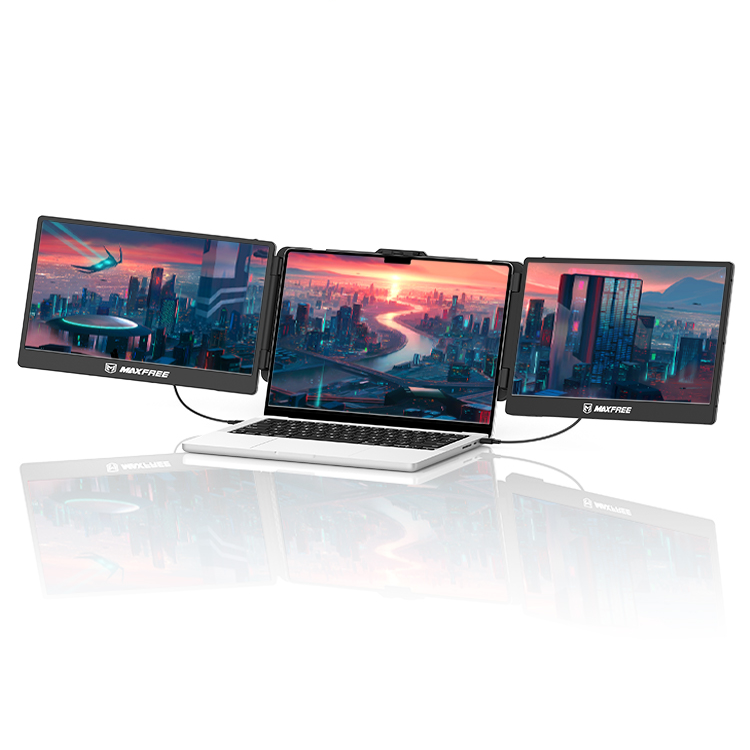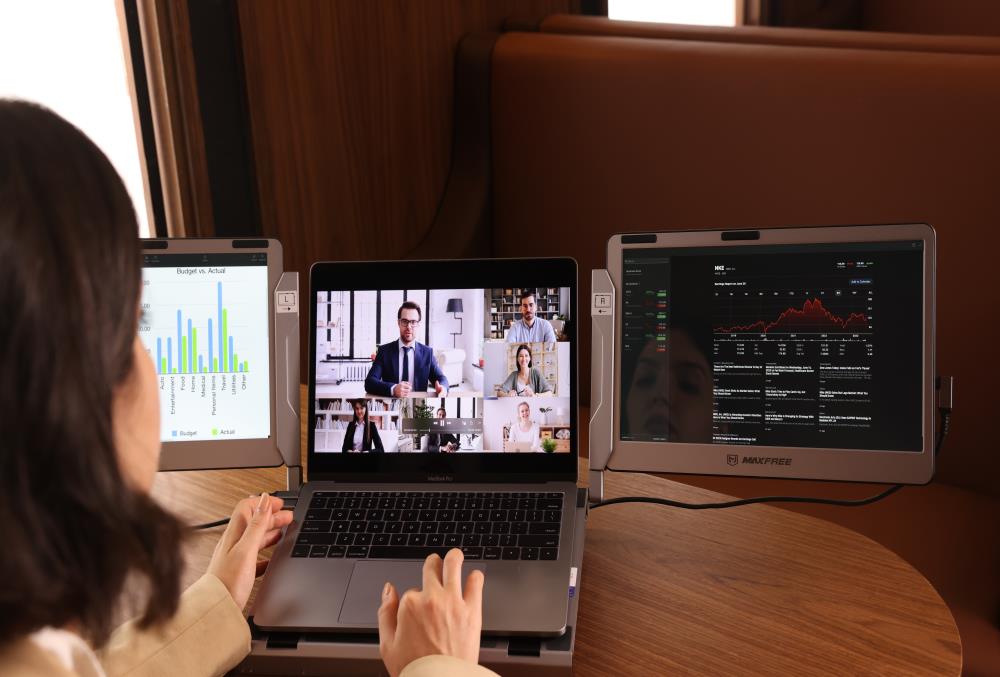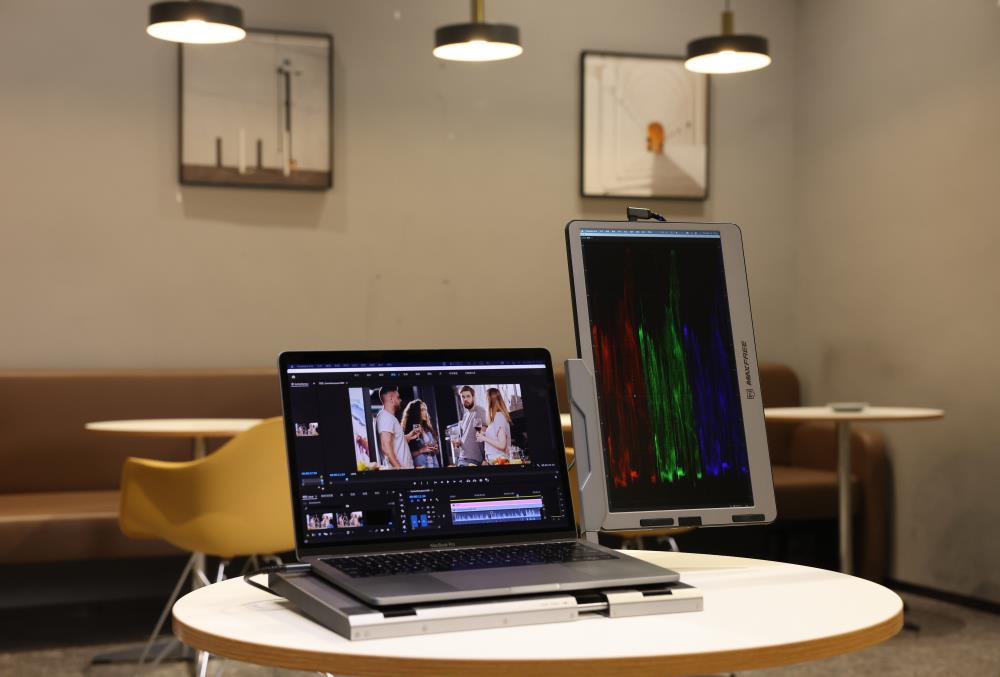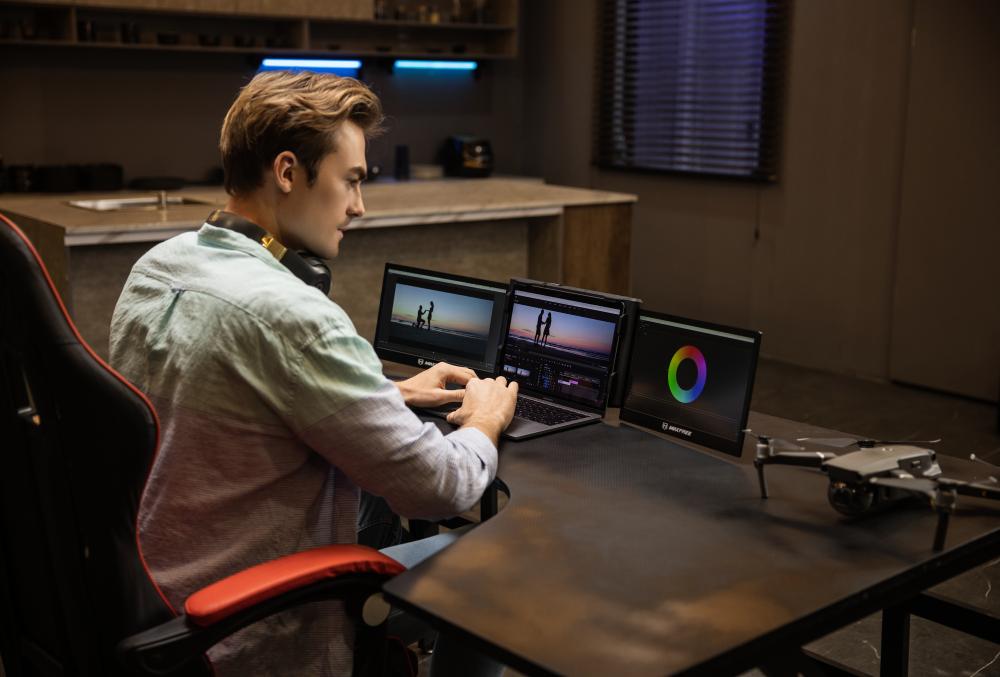Introduction
A dual or multi-monitor desktop is a system step up where two or multiple monitors are attached to a single computer's operating system. It extends your visual workspace with proper system specifications and support. While saving space and avoiding keeping multiple computer components, a multi-monitor system offers multiple advantages such as:
- Run multiple programs simultaneously
- Fast & hassle-free sharing of data in multiple applications
- Refer critical data from one display to other
- Easy & clear comparison of different files among different monitors
- Optimize any training session or onboarding
- Multiple editing, gaming, programming, data entry, etc, at a time
So, while optimizing the multi-benefits of multi-monitors, you must make them visually versatile and esthetically attractive with the multiple options and steps to set and change different monitor backgrounds.
Check System Requirements before starting
Before initiating the process to set dual monitor background or multi-screen background images, you must be clear about the basic requirements and components of your system. Unless your system has the necessary specifications, you can't connect the multiple monitors to your single system. So, here you go with the system requirements for multiple monitors:
- Multiple monitors
- A compatible video or graphic card to support extended multiple monitors at a time
- Compatible cables to connect monitors with video card or motherboard in case of using onboard graphics
- Updated graphic card driver software to configure monitors
How to set up unique wallpapers for different monitors
Once you are done with setting up your multiple monitors, it's time to set different monitor backgrounds. To do these, you can explore multiple options to set multi-screen background images. So, you can select any of these options depending on your choice. Here you go with the options:
- Opt for a built-in settings option for Windows 10 & Windows 11 desktop customization
- To have high-end customization & control over different monitor backgrounds, you can use third-party background-changing software such as DisplayFusion, John's Background Switcher, etc.
- Using Windows File Explorer, you can change multiple screen background images
- Using the personalized menu of your system, you can change different monitor backgrounds
Choose & create background images
Among multiple options for optimizing the Windows 11 desktop experience, you must go for the built-in "Settings" option of your Windows system. Using the setting function, you would not only set multiple or dual monitor backgrounds but also customize and adjust screen scale, size, resolution, image orientation, and many other things. Using settings, you can also enable multiple displays viewing mode on your system to expand or mirror screen to multiple monitors. So, let's see the two options to set different wallpapers on multiple monitors using the slideshow option on how to set different wallpaper for each monitor.
Option 1
Step 1: Head to the "Settings" > "Personalization" > "Background". Select "SlideShow" from the "Background" drop-down menu.
Step 2: Select "Browse" > "Folder" that has images to display on monitors.
Step 3: For rotation frequency, select the "change picture every" drop-down menu. Next, turn on the "Shuffle" option.
Step 4: For different size images, select the "Choose a fit" drop-down menu > Fill option.
Option 2
Step 1: Move to the "Settings" > "Personalization" > "Background"> select "Picture" from the "Background" drop-down menu.
Step 2: Select "Browse" > "Wallpaper" > "Choose Picture." Right-click on the image of your choice and select the monitor on which you like the image to display.
Note: You should repeat the steps to change the background image of another monitor.
Configure Multiple Monitors
While reading these multiple options to set multi-screen background images, if you are looking for a chance to explore the same benefits with your laptop instead of a desktop setup, you can easily do that. To expand your laptop's workability and display, you can use multiple display screen cases that could be smartly connected to your laptop to offer the same multiple-screen benefits of the multiple monitors.
So, to experience multiple display screens, you don't need any desktop setup. Several companies make these display screen cases compatible with your Windows laptop. According to my experience and depending on maximum positive customer reviews, Maxfree is one of the most effective options for your multiple-screen setup with a laptop.
Tips & Best Practice
Unless and until you select the best background images for your multiple monitor screen, you will end up with a cluttered digital display. So, before selecting any random or trending wallpaper, you must go for something that suits your personality and the purpose of different monitor backgrounds. So, here you go with some tips and tricks to make your multiple-screen background images attractive and adequate.
- Select the right resolution of the images to get the best visual effect
- Avoid images with lots of contrast
- Don't select images that make the desktop icons difficult to recognize
- Select images with an aspect ratio that compliments your monitor screen's aspect ratio
- The image size should be perfect, depending on your screen size.
- Avoid stretching the image as it blurs the image
- You can select multiple images to tile on the screen for an image collage effect
- Place the image in the center of the screen to an extra border display.
Conclusion
If you are fond of changing the wallpapers of your system but have no clue how to set a different wallpaper for each monitor when you are using multiple monitors, this must be helpful for you. However, while changing the background, you must follow the above-mentioned tips to optimize your extended digital display.
FAQs
Q. What if I have more than two monitors? Can I set unique backgrounds for each of them?
Yes. Once your dual monitor system is set up, you can put different monitor backgrounds on each one of them. You can either go for the easy but imperfect method of using the Windows File Explorer, or a bit complicated but powerful way is to use the Personalization Menu.
Q. Is it possible to use live wallpapers in Windows 10 and 11?
Unfortunately, Windows 10 and 11 do not natively support animated wallpapers, only static images on the background screen. However, you can set live wallpapers and moving videos or animations using third-party apps.





Leave a comment
This site is protected by hCaptcha and the hCaptcha Privacy Policy and Terms of Service apply.